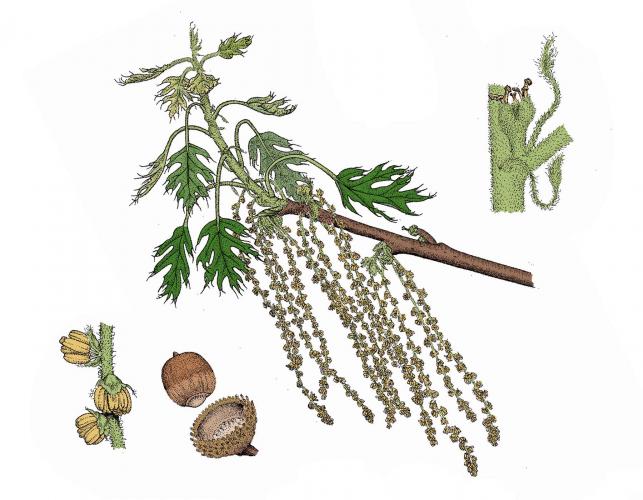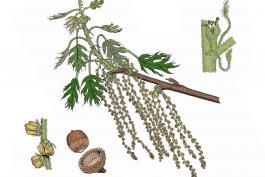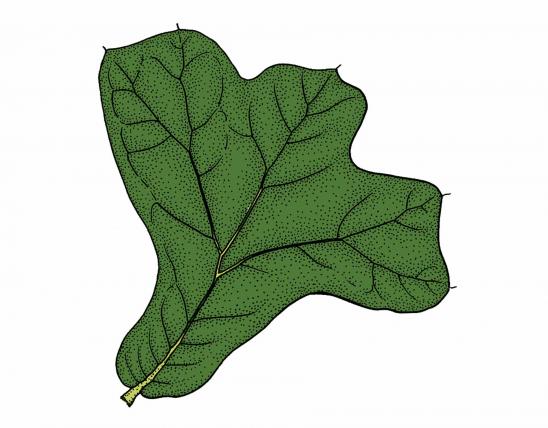
Water oak is a medium to large tree with a tall straight trunk, a rounded, symmetrical crown, and ascending branches.
Leaves are alternate, simple, 2–4 inches long, broadest near the tip, fan-shaped, tapering to a long, narrow base; margin varies, sometimes entire with a rounded tip, often slightly wavy, usually with 3 broad lobes at the tip. Lobes sometimes with bristle tips. Leaf stalk less than ¼ inch long. Leaves turn yellow in fall; brown leaves persist into winter.
Bark is grayish-black, smooth, and tight on young trees, becoming shallowly grooved with wide, flat, scaly ridges with age.
Twigs are slender, reddish-gray, smooth.
Flowers April–May, in catkins.
Fruits September–October, acorns solitary or paired; brown, broadest at base and broadly rounded at the tip, about ½ inch long, cup covering to ½ of the nut, cup shallow, saucer-shaped, thin, reddish-brown; scales small, thin, flattened hairy; seeds bitter; ripening in autumn of the second year.
Height: to 80 feet.

Its range is restricted to the southeast Missouri counties of Ripley, Butler, Dunklin, and Pemiscot. You can visit this and other rare lowland species at Allred Lake Natural Area.
Habitat and Conservation
Occurs in wet bottomland forests and edges of swamps (not within permanent swamplands) in the southeastern Missouri lowlands. Also used as an ornamental in lawns of southeast Missouri. This species, like many plants and animals that require wet lowland forests, has been declining in our state due to extensive clearing, rowcropping, ditching, and draining in our Bootheel counties.
Status
Water oak is a Species of Conservation of Concern in Missouri. The natural range of this water oak is from east Texas to Florida to New Jersey, and north to Oklahoma and Tennessee. The Bootheel of Missouri represents a northern extent of its range. Unfortunately, much of our Bootheel lowland forest has been converted to agriculture or otherwise disrupted, so this tree's presence in our state is imperiled.
Human Connections
The lumber of this species is not rated as high as other oaks due to its abundance of knots; it has been used mainly for fuel. Except for hikers in our southeastern counties, and people from the southeastern United States where it is more common, most people know this species as a shade tree.
Ecosystem Connections
The acorns are eaten by songbirds, woodpeckers, ducks (especially mallards and wood ducks), wild turkey, mice, squirrels, raccoon, and white-tailed deer. A habitat is made of the total of environmental elements, including the trees. This interesting tree helps define our southeastern lowlands.



































